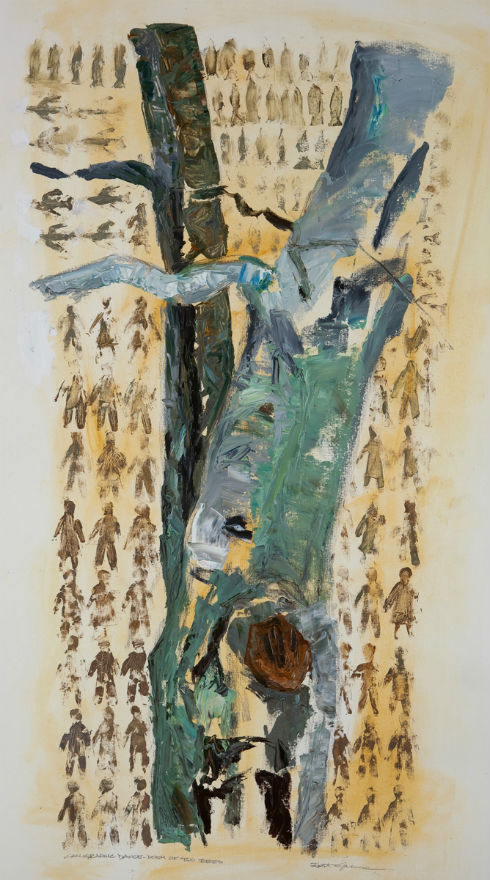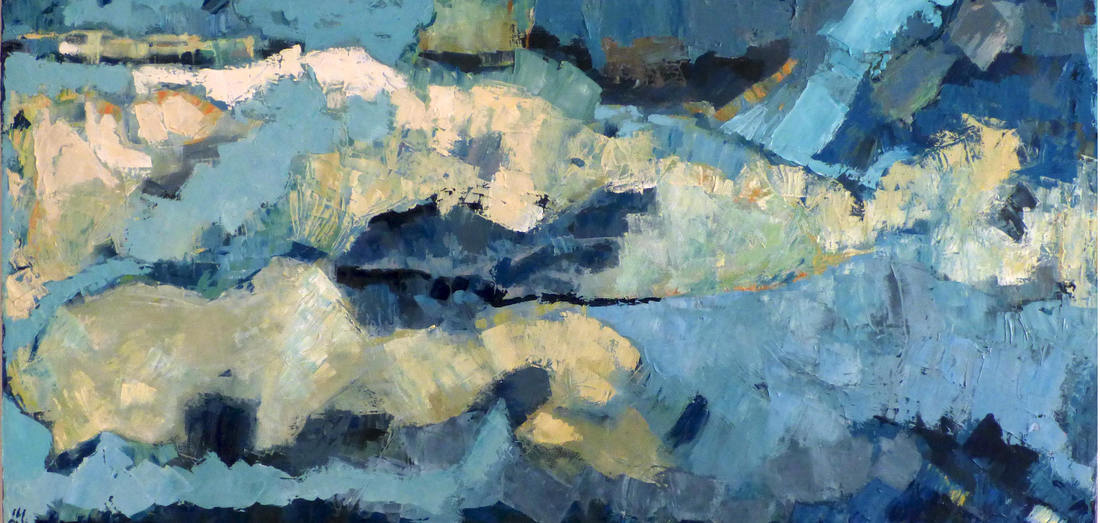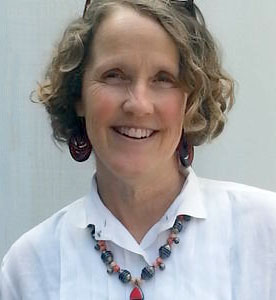
The presence of technology would be an affront to the sensitivities of the place.
The Morris Graves Estate, where I recently spent a two week artist’s residency, is a sacred space. It is 167 acres of primordial forest surrounding a lake high in the coastal mountains of Northern California, an area considered to be part of the Redwood Forest. Morris Graves chose the property for its inherent qualities. He set about to develop the land into a space where he could live and work and enjoy the beauty to its fullest with Buddhist sensibilities.
His home, designed by the well-known Seattle artist, Ibsen, rests inches above the water line of the ‘Lake.’ The front room steps down three steps to access this experience of being afloat on the water. The wall of windows on the front of the house frame the views as a Chinese painting frames the views of mountains in mist or as a Japanese painting frames a view that is partially covered in mist of a moon gazing pavilion, the occupant floating in meditation out into the mist suspended over the lake.
Golden lotus hug the shallow area near the home. Across the water one can see the Tea House, designed by Morris from a dream he had. Robert Yarber, Morris Graves’ assistant for thirty years built the building, a miniature version of the main house. Surrounded by yellow iris, this second building on the ‘Lake’ does indeed have a moon gazing pavilion.
Morris Graves was adamant about not encroaching upon the primordial forest surrounding his home. His attitude was one of living in harmony with the surroundings as opposed to the imperialist attitudes of domination over nature that has ravaged our planet.
His home was literally in the primordial forest with trees surrounding it just feet away from the structure. After Morris’ death, Robert did remove the trees from the immediate area as a fire buffer zone. Practicality and function meet idealism and the sacred.
Bear, lynx, and other native creatures shared the property harmoniously with Morris and now with Robert Yarber and his wife, to whom Morris left the property. During my two week stay, I saw signs of bear three times. The first was my first day. The nine inch in width, four to five inch in depth pile of scat, left dead center in the wide path to the Yarber’s home, was, I was told, left two days before my arrival. The second siting was during my walk up one of the largest coastal mountains on the property, the path up to see the eight hundred year old Redwoods on the property. The trail was spotted with small bits of bear scat. At one point shortly before the crest, I smelled a foul stench, just a glimpse of the strong odor. I stepped back a few steps to return to where I caught the scent. Off to the right was evidence that a large animal had left the trail and scrambled over the incline and off through the dense overgrowth into the wildest part of the property. The scent must have been the bear’s spray or mark, as were the scat droppings, warning of his presence. My third sighting was on my final day. I had done two gouache and walked several trails on the estate, in an attempt to take in as much as I could. I set out to do one more gouache and enjoy the trail and view out to the Pacific coast. Dead center in the path that I had been on yesterday and had earlier that day stopped feet before was another large mound of bear scat. I turned around and walked/ran back to the shelter of the four walls of the studio.
Land becomes the person. Unfortunately few understand this. Wendell Berry writes of this. He writes of the connection and the dysfunction that arises from the lack of connection with the earth. Here is one quote from Berry taken from an article by Sarah Leonard in ‘Dissent’ magazine in the spring of 2012. "“Wonder” is a word that applies. To live and work attentively in a diverse landscape such as this one—made up of native woodlands, pastures, croplands, ponds, and streams—is to live from one revelation to another, things unexpected, always of interest, often wonderful. After a while, you understand that there can be no end to this. The place is essentially interesting, inexhaustibly beautiful and wonderful. To know this is a” guiding life force. It dispels the myth that your “life is not good enough.” A sense of contentment is carried with a person by “living watchfully and carefully the life uniquely granted to you by your place.”
This land, this primordial forest became me. When, I wasn’t painting, drawing, or writing in my journal, I was watching the birds. And the birds watched me. The birds watched the other birds. The birds watched the turtles. Their day was spent in a natural meditation of their presence; their existence; an instinctive and constant stilling of the mind. They would sit on a branch or float on the water simply observing. Sometimes they would be joined by other birds of different varieties. Sometimes they were solitary. Sun, insects, and stillness of heart.
Their utter contentment with the space of the moment becomes apparent in this place.
“In painting, the painter…must first still his heart. ‘Stilling the heart’ expresses beautifully the quietness necessary for creative ideas, an inner quietness related to the silence of the Tao…similar to the stillness of deep waters…equate stillness with purity of heart…In stilling the heart…can become one with …elements of nature…true meaning of wholeness…aim of painter to identify with the object depicted.” Mai Mai Sze , “The Tao of Painting.”
___________________________________________________________________________________
Observations and happenings that amused me and gave me a sense of peace during my stay at Morris Graves home in Northern California:
The Flicker came pounding on the roof of the studio on several mornings. His call for a mate translates to human intellect as mischief and made me laugh.
The pair of Stellar Jays introduced themselves on my first morning. They communicated their intent clearly. From their first introduction on, I was expected to give them a morning snack. I would save my apple or pear core to toss out on the deck for them every morning. One morning when the fruit was all gone, I forgot my expected duty. One of the Jays sat on the high back of the old wooden chair outside the kitchen window. The chair was butted up directly against the glass of the window. He sat with his beak pointed down and his eyes parallel to the glass, his head with his top notch of feathers pushed up against it, looking in, through the glass for me and for his morning snack. They made me laugh. From then on each day after, until I departed, I obeyed the Stellar Jays. I would throw bits of my Swedish rye crackers in lieu of fruit scraps, onto the deck for their morning munch. This they found satisfactory.
The Anna Hummingbirds zoomed outside the studio during the days. Like tiny fighter jets zooming, zooming, zooming up 200 feet in seconds and then down. Then shooting straight off at a direct right angle…zzzzoom, and gone. They would return to do speedster loops. Around. And around. And around. Zoom. Zoom. Zoom. Their energy was astonishing. Areas of their activity were scattered all over the property; centering on the red blossoms of the deciduous huckleberry. Their territories were decided by food source as each male hummingbird tried to attract a female with his antics and feats of aerial astonishment.
These were my companions. They filled my being with their joy, their humour, and with their meditation. They ‘stilled my heart.’
There was no need for technology in this sacred space. The natural web of activities was too dense.


 RSS Feed
RSS Feed